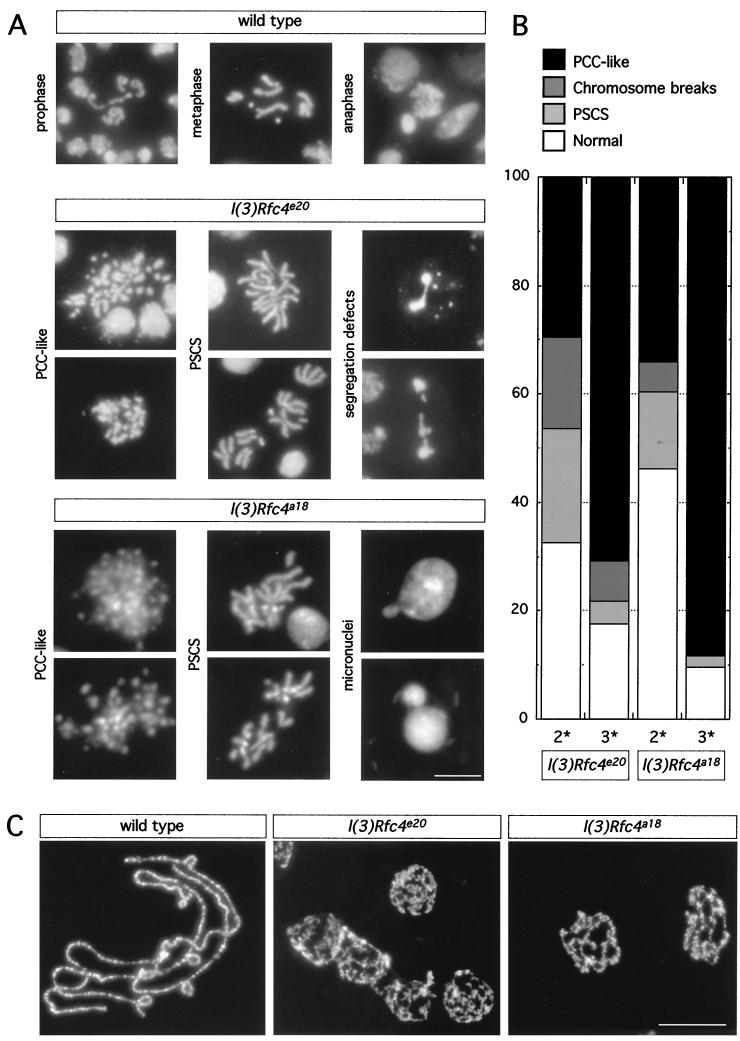FIG. 1.
Chromosome phenotypes from wild-type and homozygous l(3)Rfc4e20 and l(3)Rfc4a18 third-instar larval brains and salivary glands. (A) Larval brains were dissected from third-instar larvae and hypotonically swollen before fixation. The neuroblasts were stained with DAPI to visualize the DNA. Figures representative of the major categories of phenotype, PCC and PSCS, and chromosome segregation defects are shown. Scale bar = 10 μm. (B) Quantitation of phenotypes in second- (2*) and third-instar (3*) larval brains from l(3)Rfc4e20 and l(3)Rfc4a18 larvae. The prevalence of PCC-like figures increases as the animals age and residual wild-type maternal RFC4 is depleted. (C) Larval salivary glands were dissected from wild-type and homozygous l(3)Rfc4e20 and l(3)Rfc4a18 third-instar larvae, fixed, and stained with DAPI. The nuclei of the cells in the salivary gland were disrupted to spread the polytene chromosomes. Compared to those from the wild type, the polytene chromosomes from homozygous l(3)Rfc4e20 and l(3)Rfc4a18 larvae appear underreplicated and the banding pattern is disrupted. Scale bar = 100 μm.

